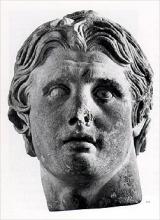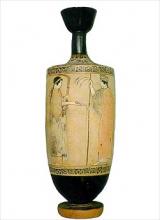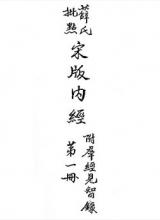The Cultures Communicate with Each Other
In Antiquity cultures communicated between themselves.
Alexander Magnius went to India and through him the meeting of the Greek knowledge with Buddhism and Vedanta took place.
The ancient Greeks had their children kneeling down, supported on their elbows. An ancient vase in the Louvre Museum shows Leto in that attitude. Moshion, a Greek doctor (200 a.C.) advised that the midwife shouldn’t stay in front of the woman in labor so that her shame wouldn’t “close the passage”, which is a fact that we can see many times in the birth rooms of today. He also describes the position of his times; the woman seated in a low chair, supported from behind by the knees and body of a helper that kept her from trowing herself to the sides.
That image is represented on the Pantheon.
The Romans gave birth sitting on a special chair, with the help of a midwife:
The child was put on the floor by the midwife, so that the father would take it in his arms, which meant recognition. If that didn’t happen the child was abandoned in public places. Abortion and infanticide were legal.
Soranus of Efesus, who practiced medicine in Rome at the time of Trajanus, advised that, in difficult cases, the patient should kneel down, as the Greeks did.
In Pompei and at the port of Rome vases were found showing women giving birth on low chairs. Among the Orientals, the position to give birth changed from one people to the other, squatting or kneeling down.
In China, around 1100 d.C., during the Sung dinasty, obstetrics became a specialty. There are various treatises on the matter; one of them with 24 volumes with 260 articles divided in eight parts about ginaecology and five about obstetrics. The author belonged to a family of doctors for many generations; in writing this book, he consulted the works of more than twenty authors.





